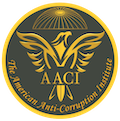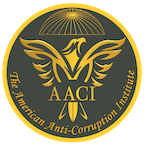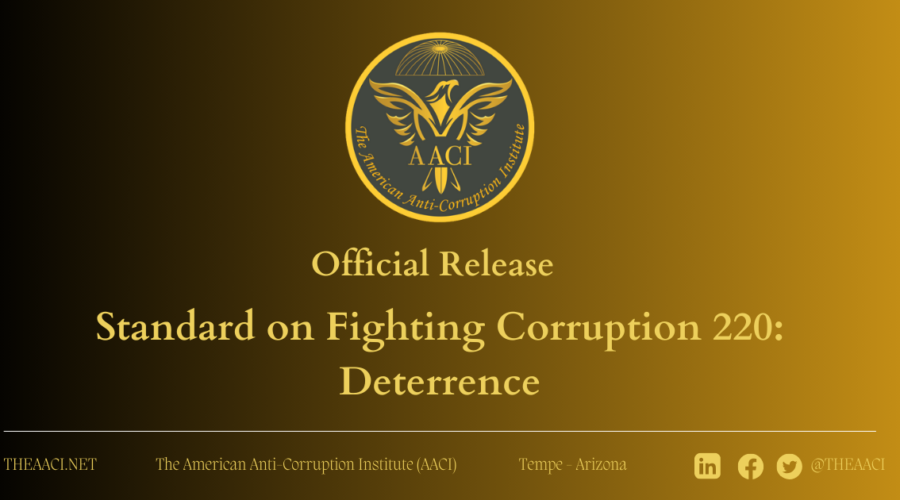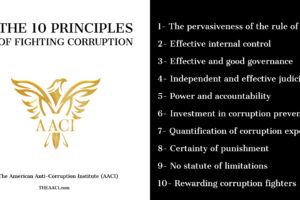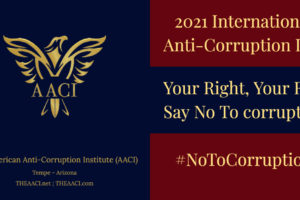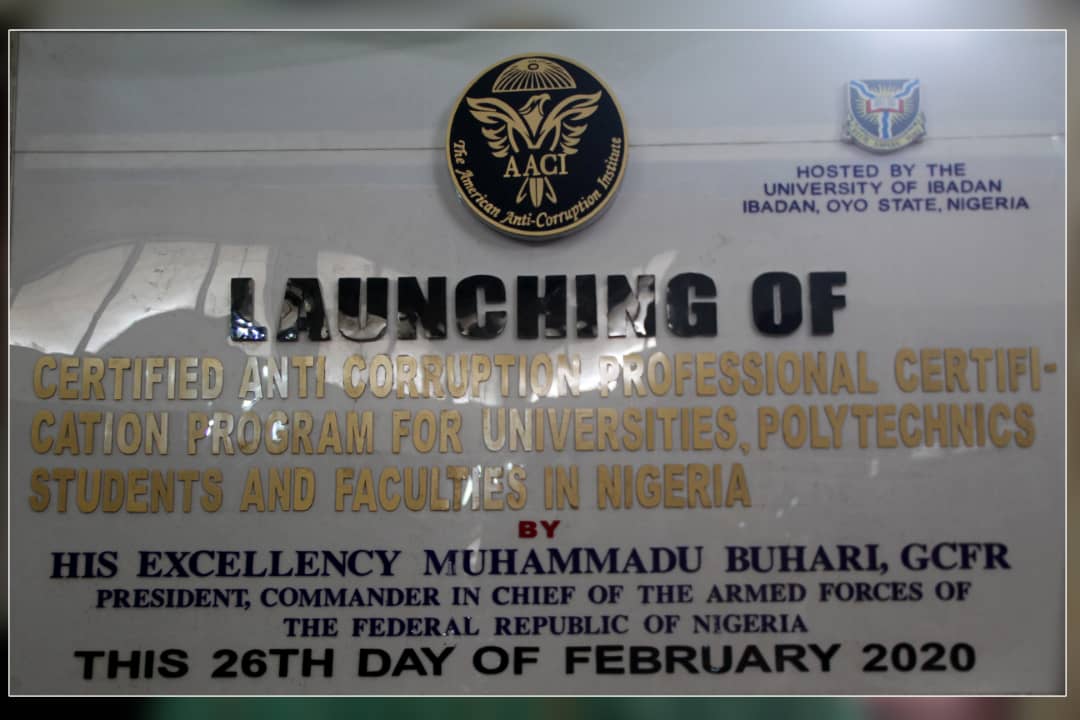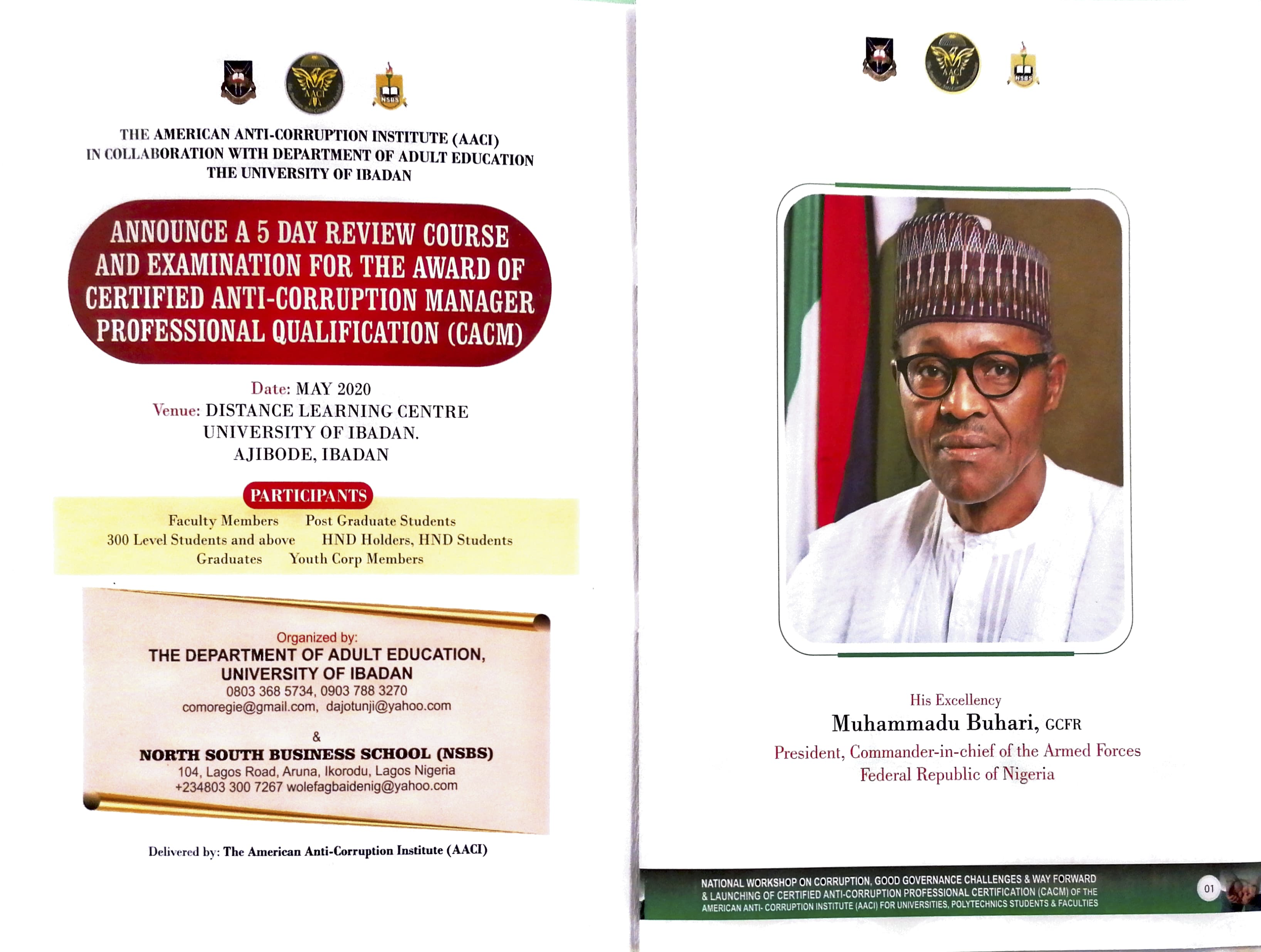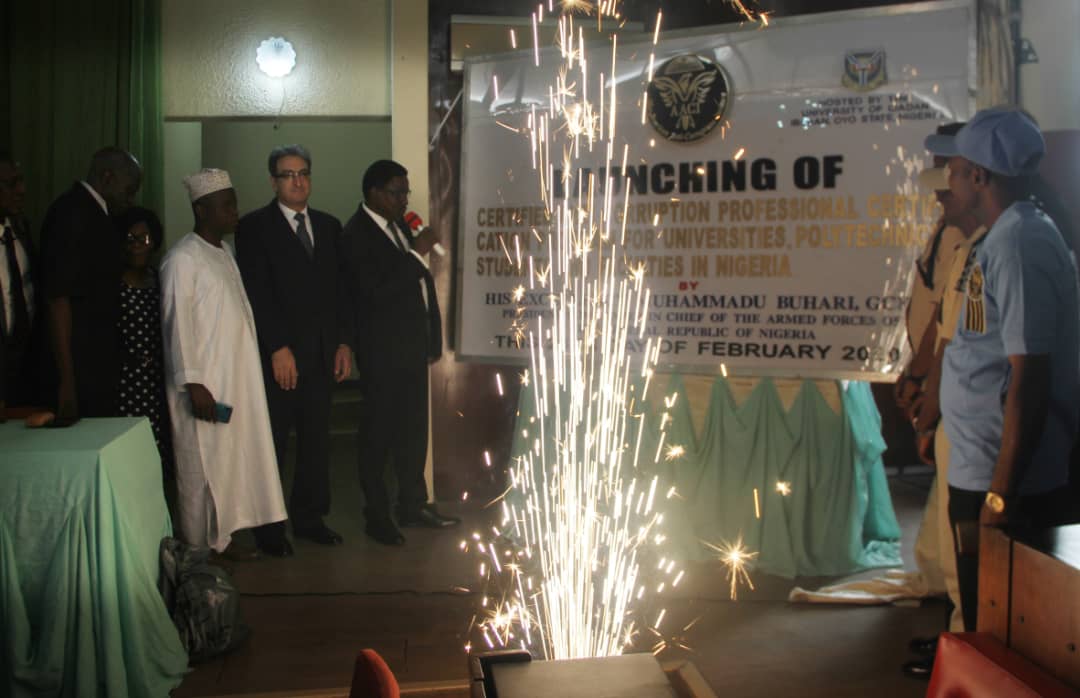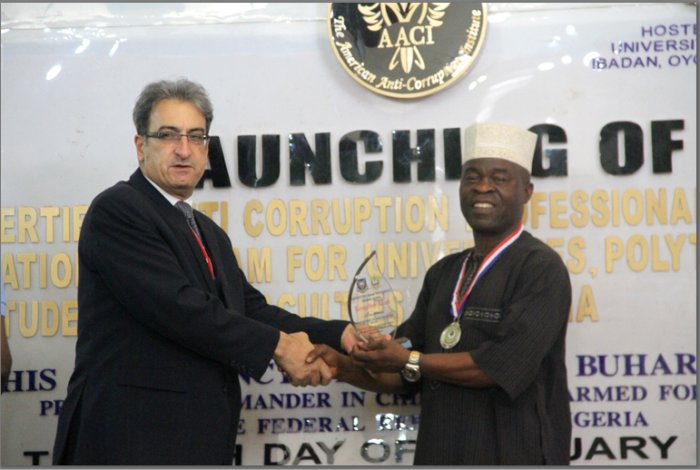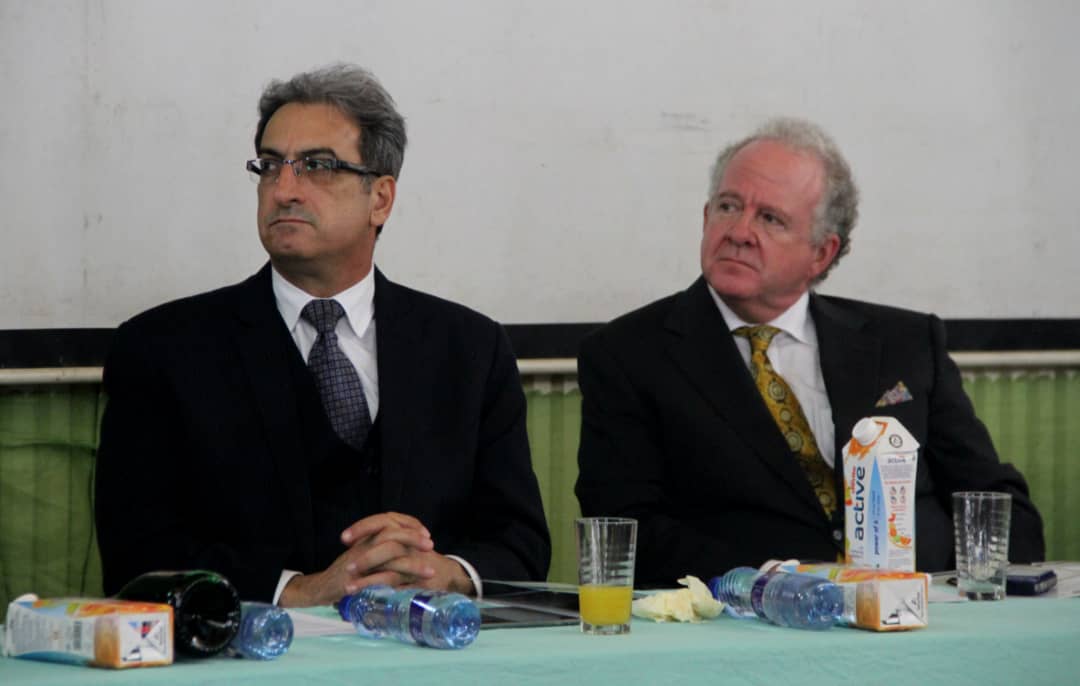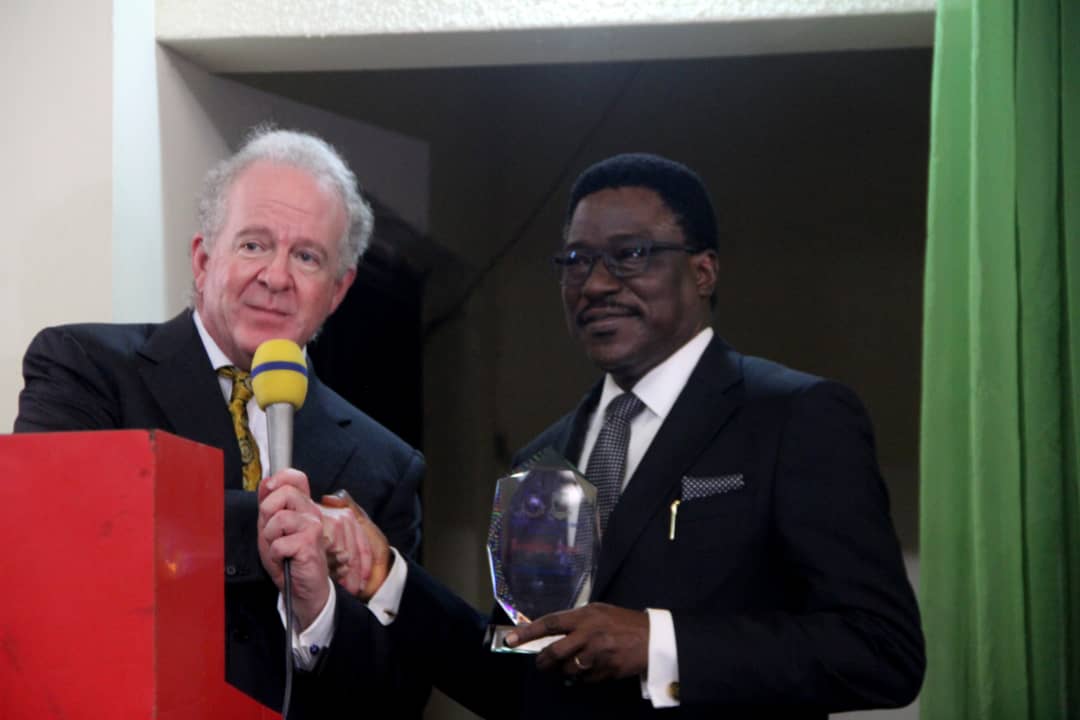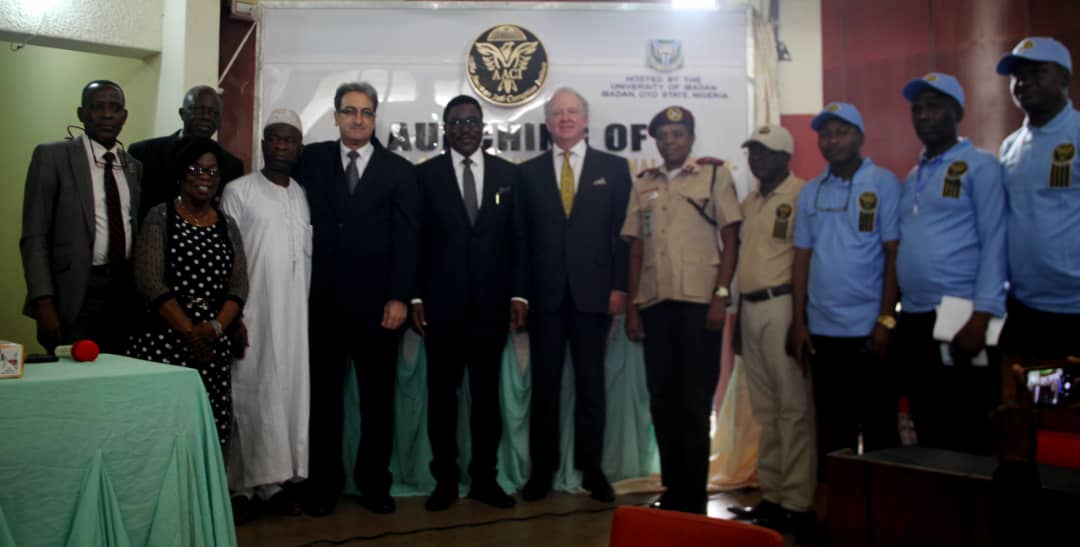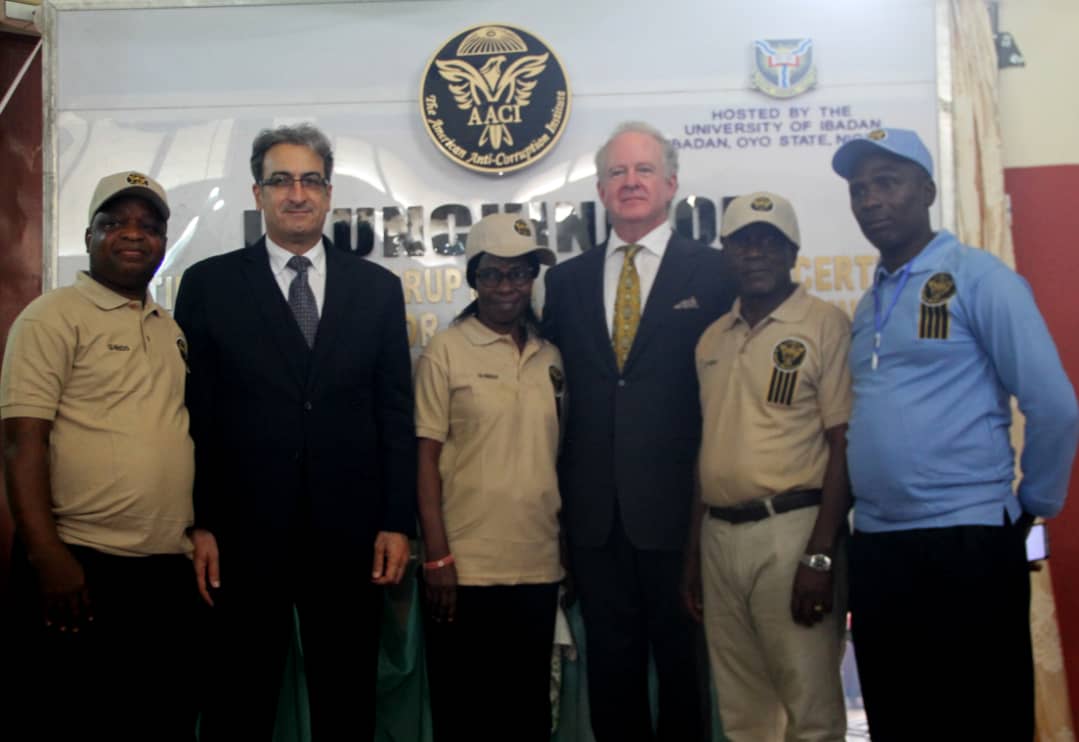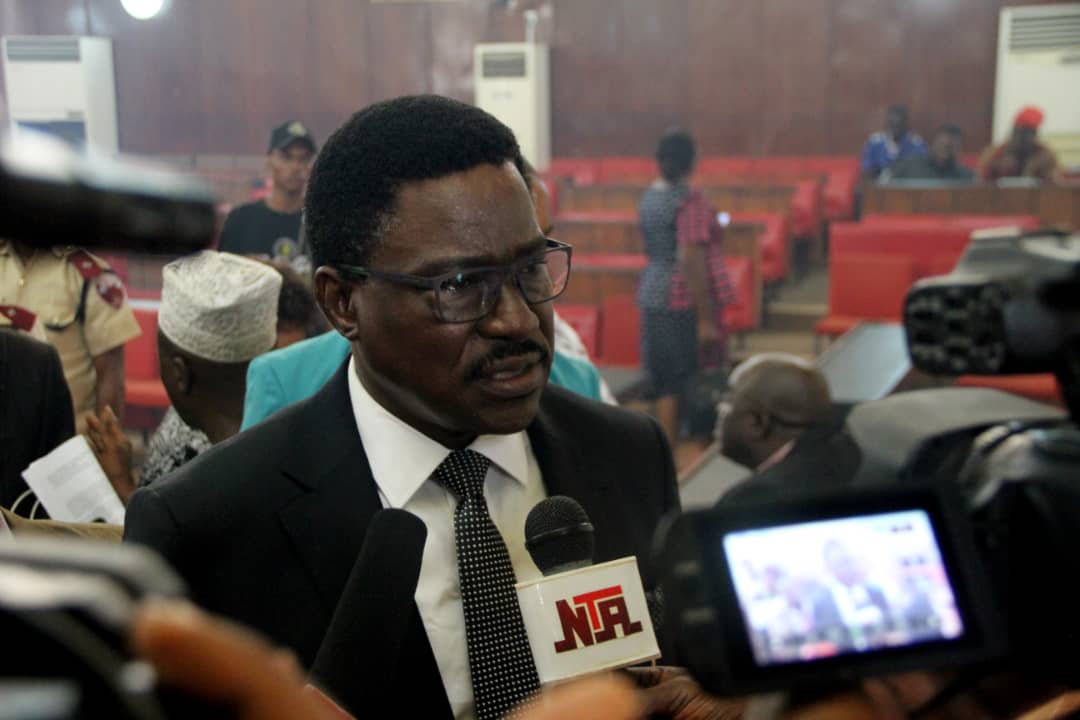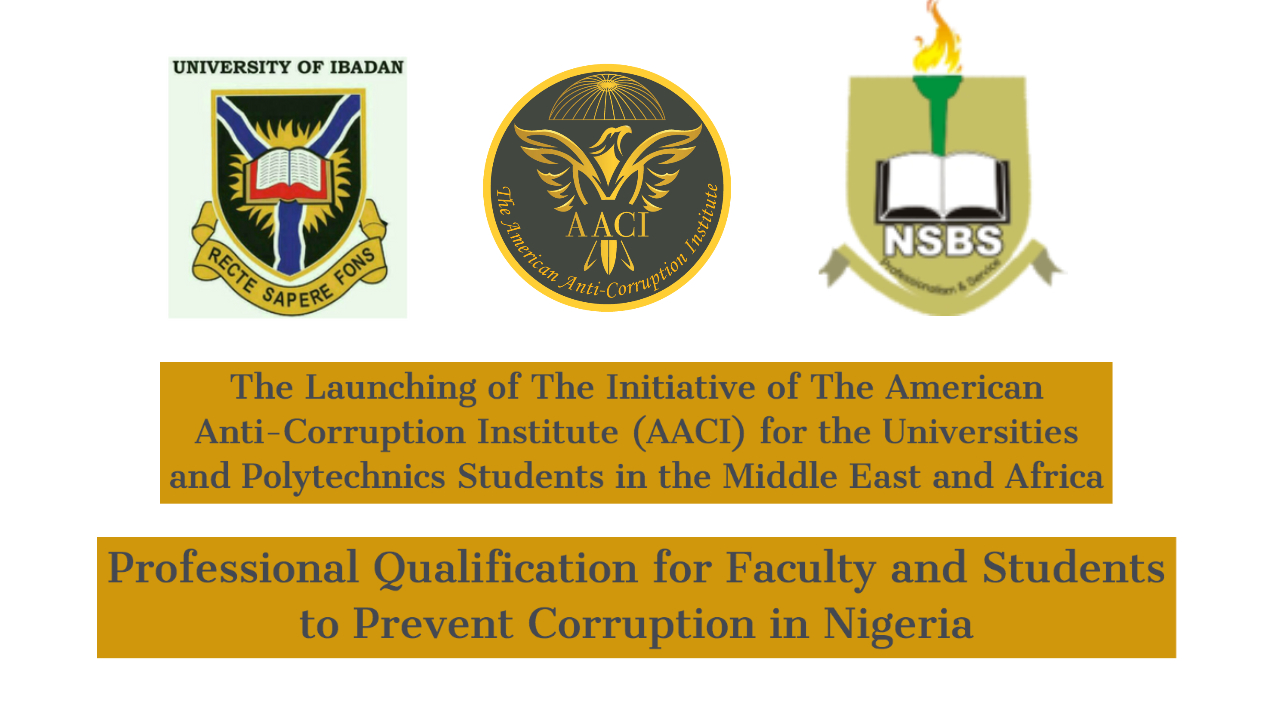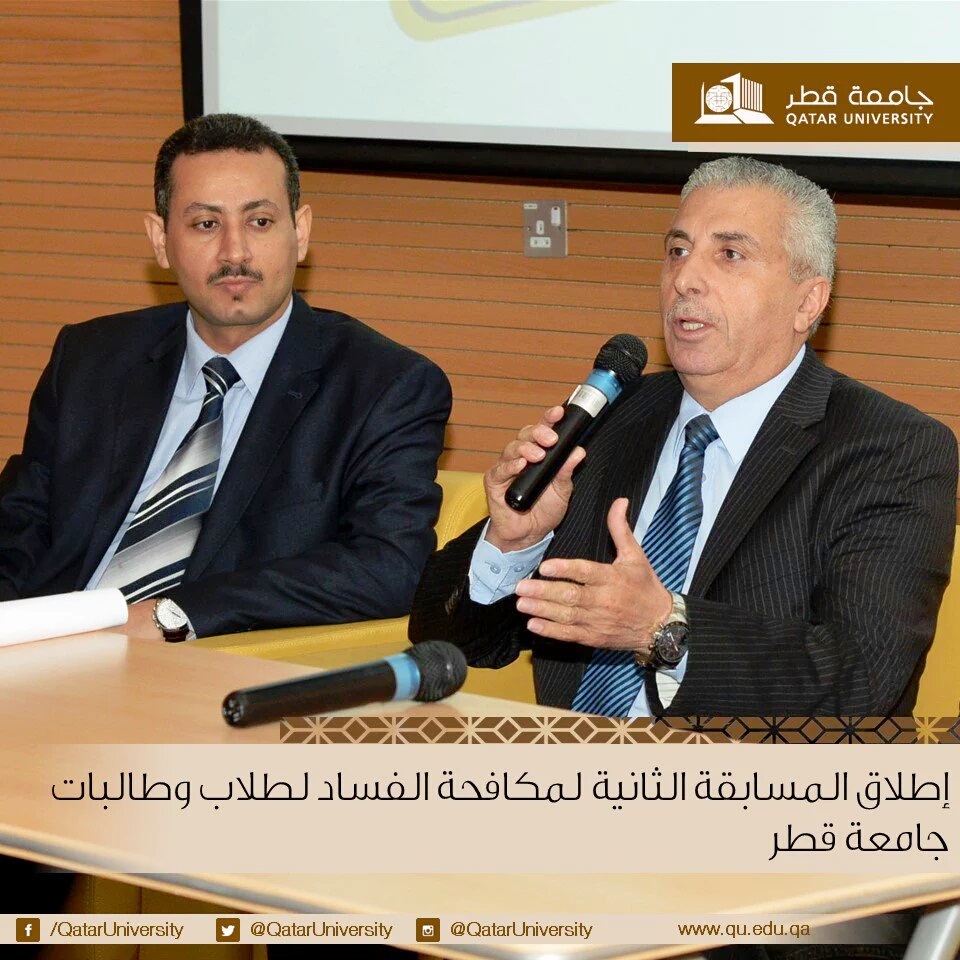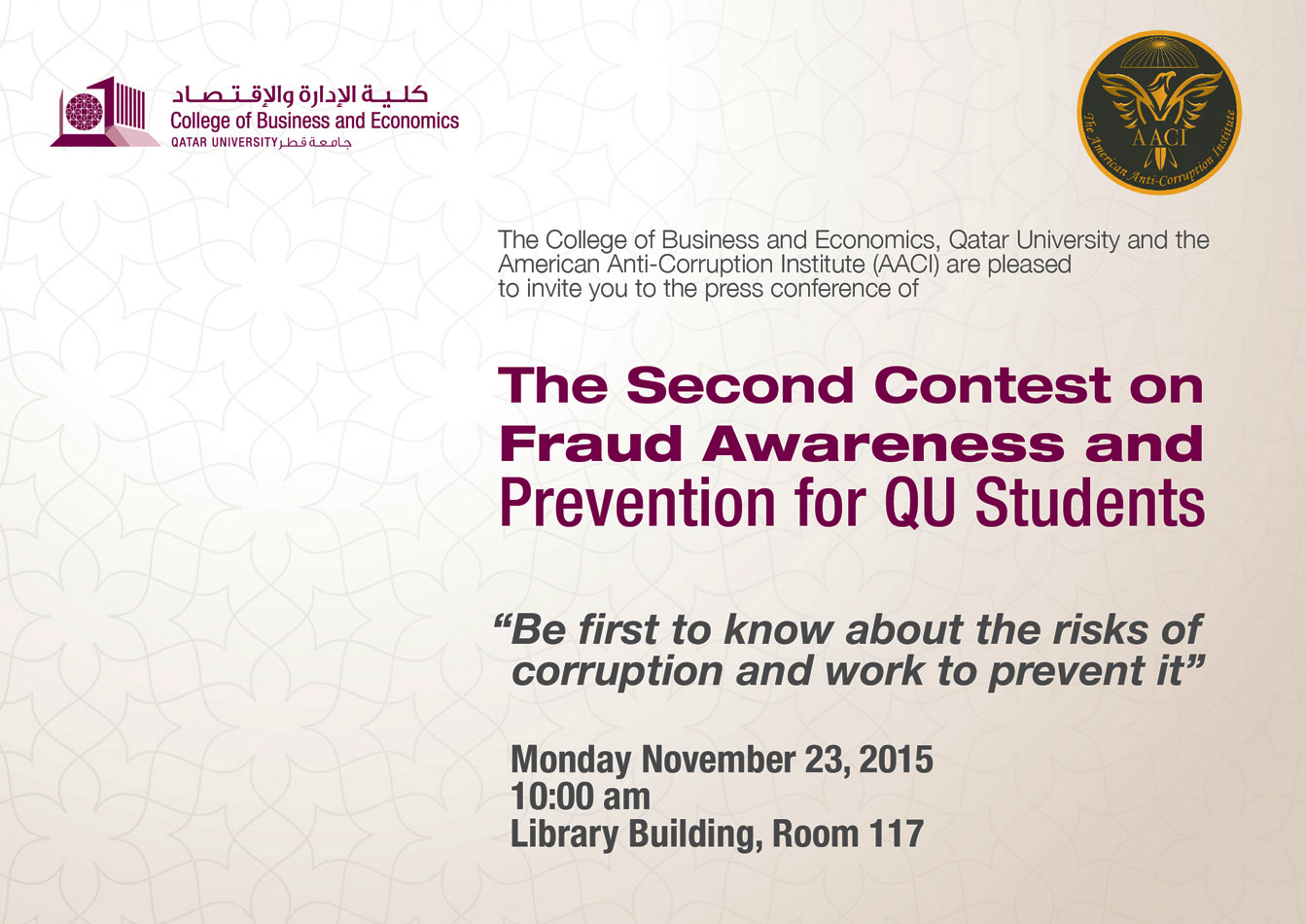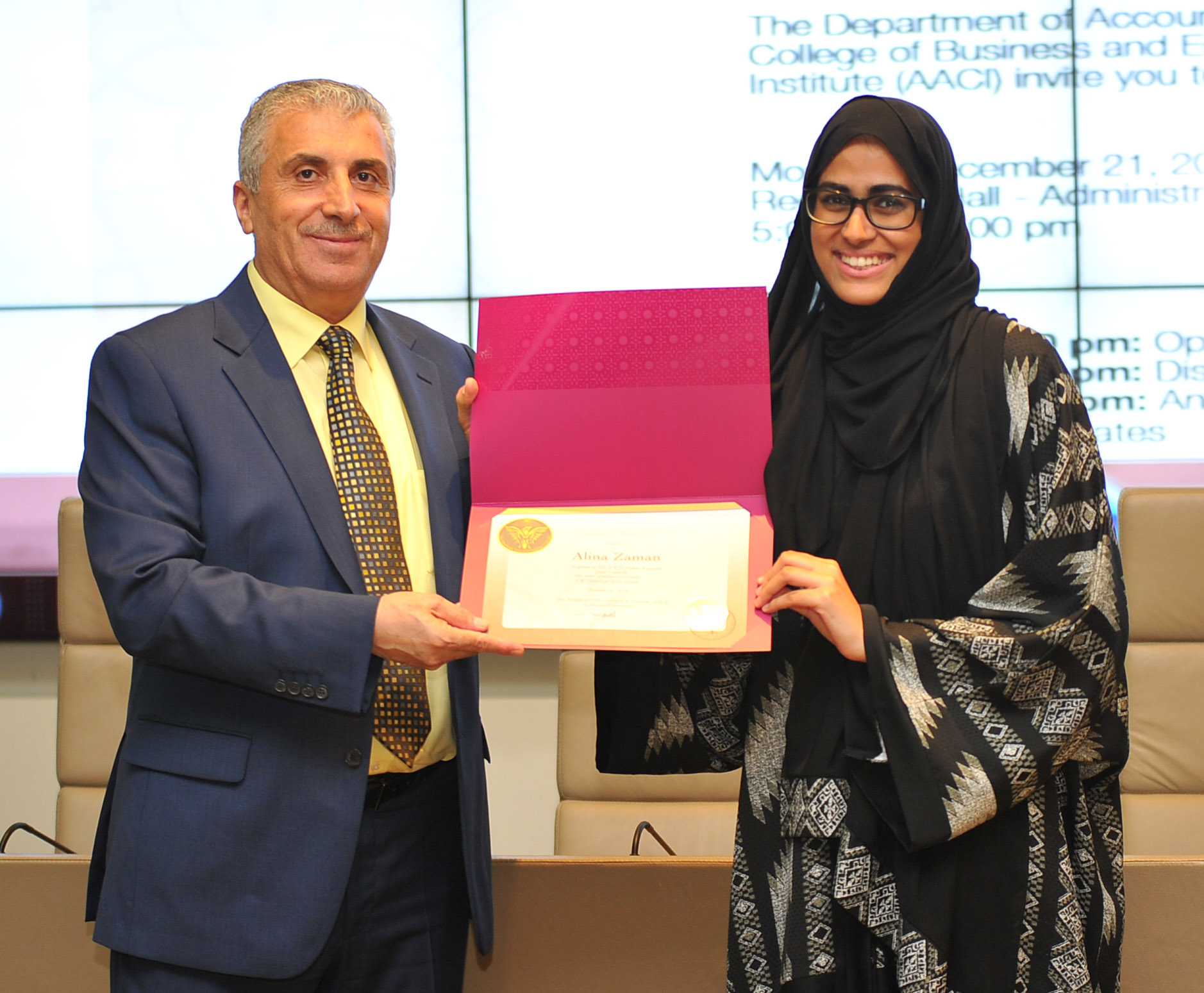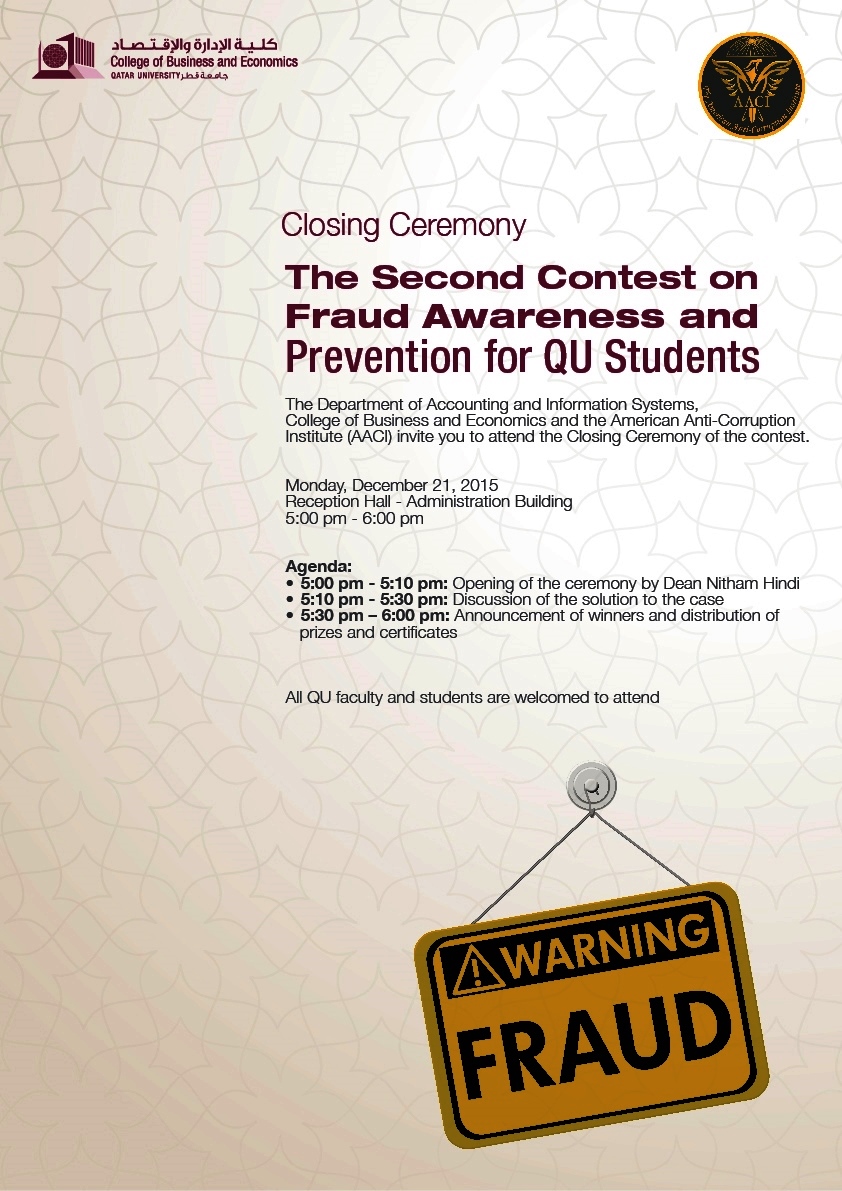OFFICIAL RELEASE
Technical Staff
October 15, 2023
Standards on Fighting Corruption (SFCs)
The SFCs are fundamental pillars and guidelines to help stakeholders implement the ten principles of fighting corruption and:
1. Promote consistent practice and behavior and facilitate effective responses to identified corruption risks.
2. Help management and other stakeholders to assess and evaluate the entity’s commitment to fighting fraud and corruption, and
3. Support international efforts in lowering corruption risks to acceptable low levels.
The American Anti-Corruption Institute (AACI) approved the issuance of the following SFC on October 15, 2023.
Standard on Fighting Corruption 220: Deterrence
Introduction
Scope of this SFC
1.This Standard on Fighting Corruption (SFC) deals with the significance of deterrence in achieving effective results in fighting corruption.
Effective Date
2. This SFC is effective for periods beginning or after January 1, 2024. We recommend earlier implementation.
Objective
3. Management and, where appropriate, those charged with governance shall:
a. Embed deterrence measures in the entity’s internal control to support its effectiveness.
b. Ensure that the entity’s governance structure and practices deter fraud and corruption.
Definitions
4. For purposes of the SFCs, the following terms has the meaning attributed below:
a. Deterrence: A process or series of actions designed to lower the risk of criminal behavior by fear management accompanied by the certainty of punishment. (E1)
b. Deterrence Triangle: Deterrence consists of three components:
i. Choice,
ii. Being watched, and
iii. Certainty of punishment.
Requirements
5. The organization should ensure sufficient and appropriate deterrent controls are embedded in the most critical operating cycles. However, deterrence must be prevalent in the design and implementation of internal control. (E2)
6. Management and those charged with governance should ensure that employees are sufficiently trained and educated to meet the expectations of their job performance. Management and employees should be aware of the consequences of their actions, including those related to fraud and corruption. (E3 – E4)
7. Deterrence applies to persons. They could be individuals, organizations, departments, functions, subsidiaries, or countries. It also applies to all sorts of economic sectors.
8. Deterrence consists of three components:
a. Choice. The person should be allowed to choose amongst possible actions. The losses would undoubtedly outweigh the anticipated gains of the subsequent alternate course of action. The person must make an informed choice.
b. Being watched. The mere belief of the person being constantly under surveillance would be sufficient to fulfill this requirement. It does not matter whether there is a watcher or not.
c. Certainty of punishment. Certainty of punishment must be present to have effective deterrence. Certainty of punishment is one of the ten principles of fighting corruption promulgated by The American Anti-Corruption Institute (AACI). The person should believe that he is under the law. The person should understand that no one should intervene to protect it. In other words, it will be held accountable irrespective of its status. (E5 – E7)
9. Culture, values, and social conventions should always be considered while designing and implementing deterrent activities.
10. A reasonable match between the projected losses and the accompanying misconduct should exist. Anticipated losses should be deterrent enough to stop wrongdoing. (E8)
11. Deterrence is increased by a well-designed and implemented whistleblowing policy. (E9)
12, Deterrence fails when one or more of its components are not effective or present. However, it should not be assumed that the person will not commit fraud and corruption if deterrence components are present. Deterrence provides a reasonable foundation for analyzing whether it succeeded or failed in reducing corruption risk.
Leadership Role
The tone set at the top by those charged with governance stipulates the effectiveness of deterrence. When the head of state, minister, CEO, department head, etc., supports the concept of effective deterrence in appearance and in fact, corruption levels decline significantly over a short time. Effective leadership establishes and maintains effective deterrence. (E10 – E11)
Explanatory Material
E1. Though the definition of deterrence may apply to many acts, contexts, and situations, it is limited to fraudulent acts and corruption. A person should understand and always be aware of the consequences of his ill acts and that he is not above the law.
E2. Deterrent controls are designed and implemented to achieve the objectives of internal control. The sophistication, design, and required skill set of deterrent controls depend on the identified risks and the significance of the operating cycles. For example, transferring funds from a casino has more complex deterrent controls than depositing cash from a small shop into the bank.
E3. Qualified human capital is the first line of defense against fraud and corruption. Those charged with governance oversee the quality of anti-corruption education and training of executive management and employees. Management should communicate effectively and transparently with employees regarding their anti-corruption roles. They should communicate with them via all means of communication, such as social media, email, blogs, and emails.
E4. Those charged with governance should require executive management and employees to attend at least one anti-corruption training program annually. Further, employee performance evaluation should include relevant anti-corruption achievements. Organizations should encourage and reward employees who attend anti-corruption and certification programs. For example, a manager who becomes a certified anti-corruption manager (CACM) will lower corruption risks when those charged with governance provide him with support and opportunity.
E5. Deterrence exists if the components of the deterrence triangle are correctly conceived and implemented. However, if one or more components are missing, it is impossible to conclude that there is deterrence. Evidence suggests that when a person believes he is being observed, he ensures that his behavior conforms to what is expected. For example, pupils are less inclined to cheat on examinations if they perceive humans or cameras are watching them.
E6. Excessive deterrence is highly likely to be counterproductive. Optimal deterrence is determined by the effectiveness of the government, culture, values, social norms, and the level of corruption in the country.
E7. Deterrence Triangle

E8. For example, penalizing the bank with a small fine is ineffective if it irresponsibly assists criminals in laundering billions of U.S. dollars.
E9. Those charged with governance should establish and maintain an effective whistleblowing policy. Whistleblowers are invaluable in supporting a culture of deterrence. Therefore, they should be adequately encouraged, motivated, protected, and rewarded. Whistleblower tips uncover approximately half of all fraud and corruption cases.
E10. Corruption should not have a statute of limitations. As a result, an asset obtained by corruption preserves its identity. Therefore, legislation should be designed and executed to enforce such a deterrence mechanism so that people entrusted with power do not abuse it.
E11. Persons suspected of money laundering must demonstrate they obtained their funds and property from legal sources. Such a measure would be a deterrent due to the nature of money laundering.
Notes
Principles of Fighting Corruption, Standards on Fighting Corruption (SFCs), Consultation Papers, Exposure Drafts, and other publications of The American Anti-Corruption Institute llc (AACI) are published and copyrighted by AACI or its Exam Unit.
The AACI does not accept responsibility for loss caused to any person who acts or refrains from acting in reliance on the material in this publication, whether such loss is caused by negligence or otherwise.
Copyright © 2023 by The AACI. All rights reserved. Written permission from The AACI is required to reproduce, store, transmit, or make other similar uses of this document or its contents on our websites or digital media, save for where the document is being used for individual, noncommercial purposes use only. Contact copyright@theaaci.com.
